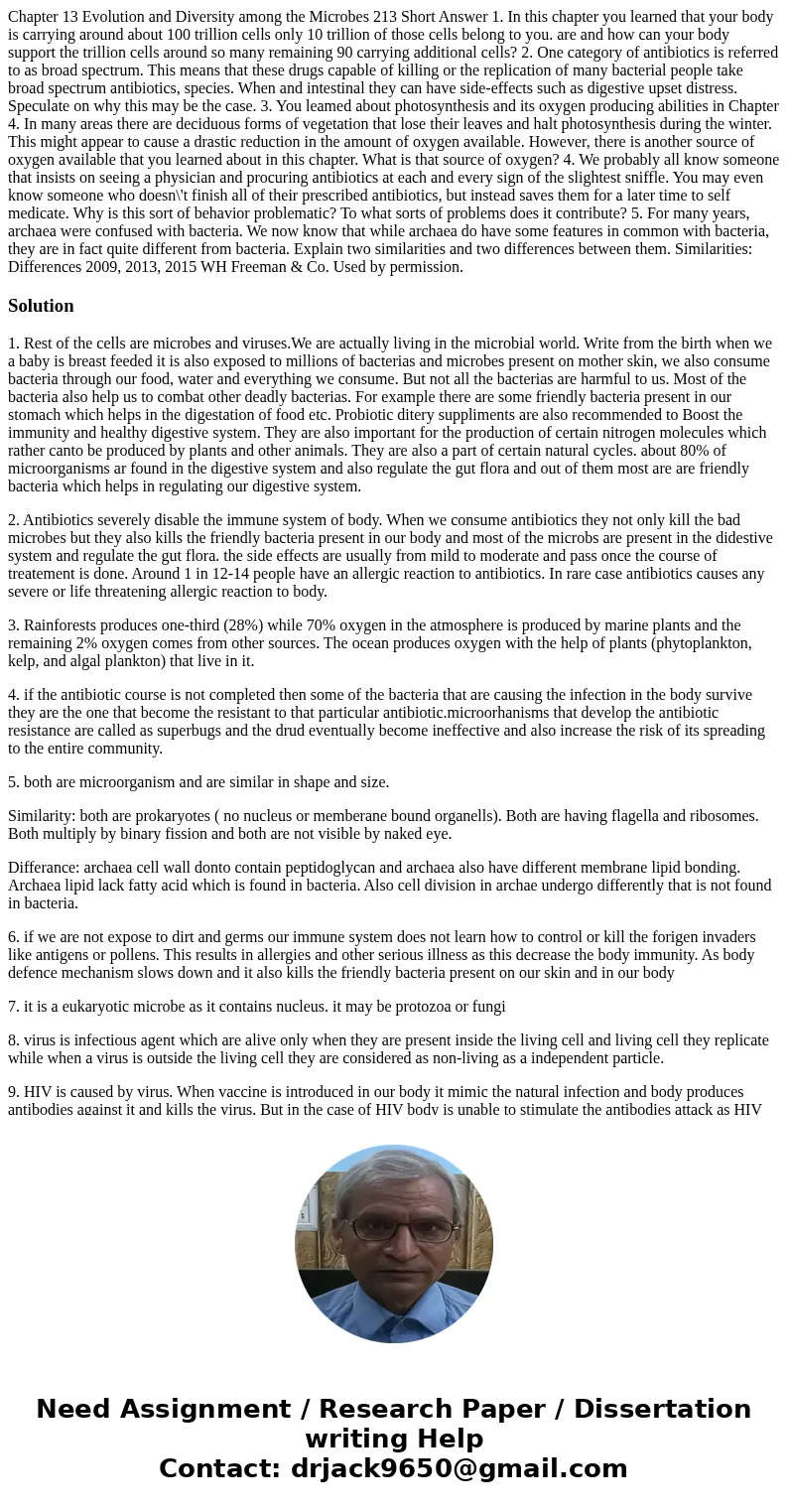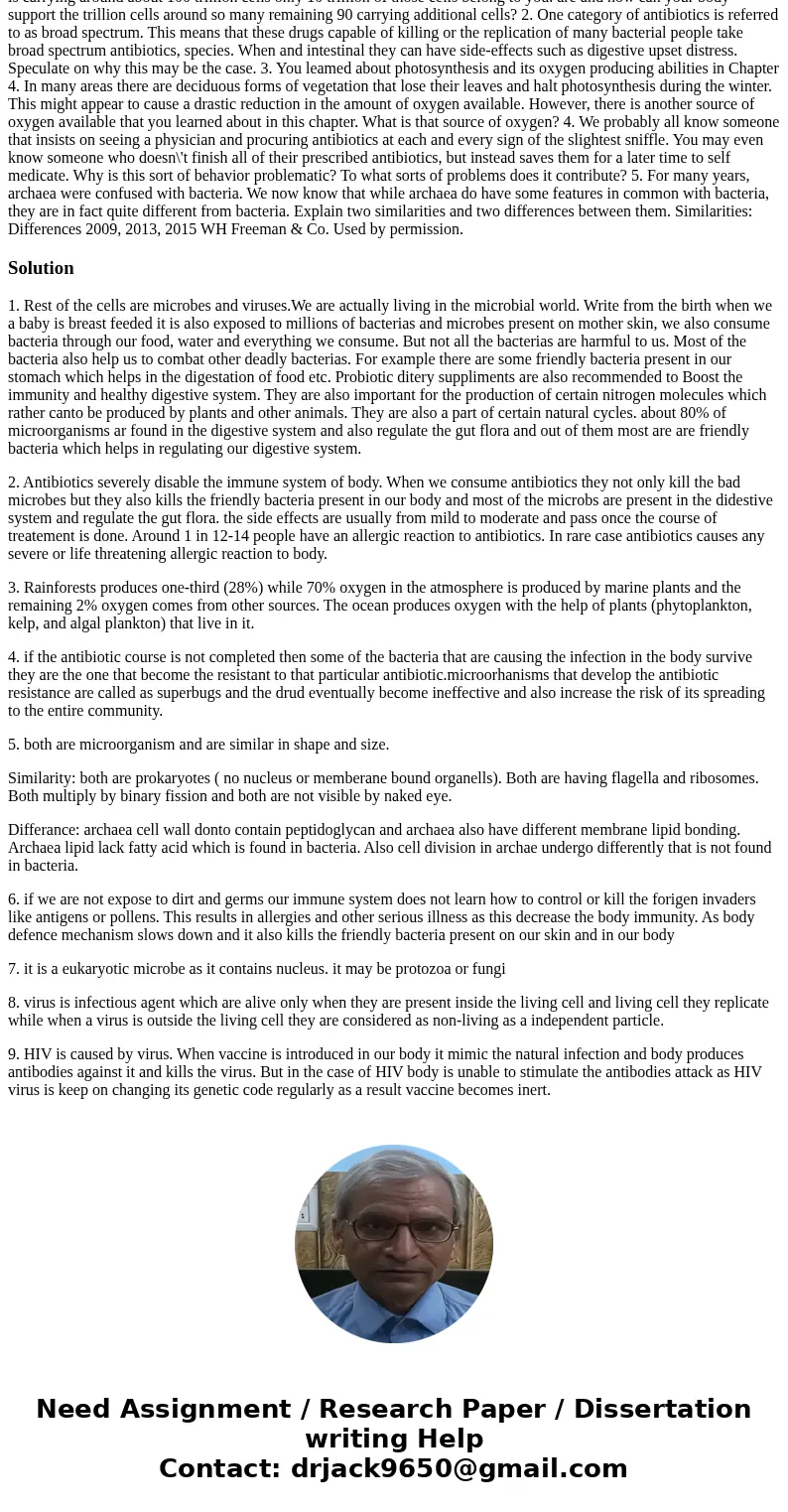Chapter 13 Evolution and Diversity among the Microbes 213 Sh
Solution
1. Rest of the cells are microbes and viruses.We are actually living in the microbial world. Write from the birth when we a baby is breast feeded it is also exposed to millions of bacterias and microbes present on mother skin, we also consume bacteria through our food, water and everything we consume. But not all the bacterias are harmful to us. Most of the bacteria also help us to combat other deadly bacterias. For example there are some friendly bacteria present in our stomach which helps in the digestation of food etc. Probiotic ditery suppliments are also recommended to Boost the immunity and healthy digestive system. They are also important for the production of certain nitrogen molecules which rather canto be produced by plants and other animals. They are also a part of certain natural cycles. about 80% of microorganisms ar found in the digestive system and also regulate the gut flora and out of them most are are friendly bacteria which helps in regulating our digestive system.
2. Antibiotics severely disable the immune system of body. When we consume antibiotics they not only kill the bad microbes but they also kills the friendly bacteria present in our body and most of the microbs are present in the didestive system and regulate the gut flora. the side effects are usually from mild to moderate and pass once the course of treatement is done. Around 1 in 12-14 people have an allergic reaction to antibiotics. In rare case antibiotics causes any severe or life threatening allergic reaction to body.
3. Rainforests produces one-third (28%) while 70% oxygen in the atmosphere is produced by marine plants and the remaining 2% oxygen comes from other sources. The ocean produces oxygen with the help of plants (phytoplankton, kelp, and algal plankton) that live in it.
4. if the antibiotic course is not completed then some of the bacteria that are causing the infection in the body survive they are the one that become the resistant to that particular antibiotic.microorhanisms that develop the antibiotic resistance are called as superbugs and the drud eventually become ineffective and also increase the risk of its spreading to the entire community.
5. both are microorganism and are similar in shape and size.
Similarity: both are prokaryotes ( no nucleus or memberane bound organells). Both are having flagella and ribosomes. Both multiply by binary fission and both are not visible by naked eye.
Differance: archaea cell wall donto contain peptidoglycan and archaea also have different membrane lipid bonding. Archaea lipid lack fatty acid which is found in bacteria. Also cell division in archae undergo differently that is not found in bacteria.
6. if we are not expose to dirt and germs our immune system does not learn how to control or kill the forigen invaders like antigens or pollens. This results in allergies and other serious illness as this decrease the body immunity. As body defence mechanism slows down and it also kills the friendly bacteria present on our skin and in our body
7. it is a eukaryotic microbe as it contains nucleus. it may be protozoa or fungi
8. virus is infectious agent which are alive only when they are present inside the living cell and living cell they replicate while when a virus is outside the living cell they are considered as non-living as a independent particle.
9. HIV is caused by virus. When vaccine is introduced in our body it mimic the natural infection and body produces antibodies against it and kills the virus. But in the case of HIV body is unable to stimulate the antibodies attack as HIV virus is keep on changing its genetic code regularly as a result vaccine becomes inert.


 Homework Sourse
Homework Sourse